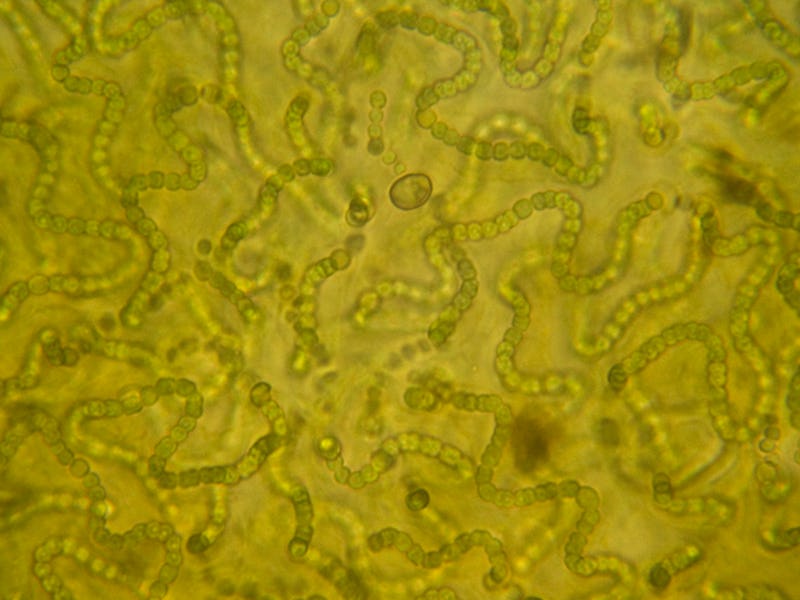These lab-engineered bacteria can take in solar energy and spit out clean electricity
Plus: Cyborg cockroaches.

To meet the ambitious goal of net-zero emissions by 2050, the U.S. is going to have to get creative with renewable energy. We can double down on long-established technologies like wind, geothermal, and solar energy, but they aren’t perfect.
For example, solar panel manufacturing comes with a hefty carbon footprint and requires dangerous chemicals. To seek out a more sustainable source of solar energy, scientists from the Swiss Federal Institute of Technology in Lausanne (EPFL) are starting small.
Well, more like microscopic: The researchers tricked out bacteria to produce solar electricity, which they hope to scale up for widespread production.
What’s new — The team inserted tiny fluorescent tubes made of carbon atoms into bacteria and observed how the tubes were distributed as the bacteria divided.
The two types of cyanobacteria they studied, Synechocystis and Nostoc, get their energy through photosynthesis (like plants do). Adding in nanomaterials like carbon tubes can help the bacteria produce significantly more electricity when illuminated by light, according to a new study published in Nature Nanotechnology.
Now, the EPFL lab is working on using the engineered bacteria to create a “living photovoltaic” that mimics the materials found on solar panels.
This rendering shows how putting specialized carbon tubes into bacteria can create a “living photovoltaic” that produces clean energy.
Living solar energy — Now, study author Ardemis Boghossian, a chemical engineer at the EPFL, is looking to lower the cost and environmental impact of putting nanotubes into bacteria.
She notes that, unlike today’s solar energy technologies, the bacteria have a negative carbon footprint: After all, they absorb carbon dioxide through photosynthesis. In the future, Boghossian hopes to program bacterial DNA to allow it to produce energy autonomously — no nanoparticles required.
“You do not need a factory to build each individual bacterial cell; these bacteria are self-replicating,” Boghossian said in a press release. “They automatically take up CO2 to produce more of themselves. This is a material scientist’s dream.”
On the horizon ...
A team at RIKEN has created a new-and-improved cyborg bug that runs on solar power (and its tiny legs).
Upon glimpsing a cockroach, you may be tempted to squash it immediately. That’s understandable, but you won’t want to kill this new type of bionic bug — in fact, it could save your life someday.
An international team of engineers has created a thin, flexible solar-powered device that turns cockroaches into cyborgs. It’s part of a decades-long effort by scientists to create robotic insects that can spot victims during rescue missions (and even spy on our conversations).
The researchers crafted a small “backpack” that sends electrical signals to the cerci, or the natural sensory structures at the rear of the abdomen. This allows them to control the tiny creatures’ movements. It’s powered by solar energy, so the bugs charge up any time they wander into a sunbeam.
They hope to add various sensors to the cockroach, like cameras, thermometers, or carbon monoxide detectors, and see which would work best for different operations.
Read the full story to find out more.
Here’s what else we’re reading...
- After 2025, Tokyo plans to require solar panels in new homes. Japan Times has the scoop.
- The U.S. Navy says that all the government’s UFO videos are classified. Releasing them will “harm national security,” according to Vice.
- China plans three moon missions after discovering a lunar mineral that may be a future energy source. Business Insider breaks it down.
- The first fully hydrogen-powered passenger train is now running in Germany. It only emits steam and condensed water, Engadget reports.
- Florida has a secretive surveillance system at toll roads that tracks you and your car. Fort Myers News-Press takes a look.
This has been HORIZONS, a newsletter that explores the innovations of today shaping the world of tomorrow. Subscribe for free.
This article was originally published on